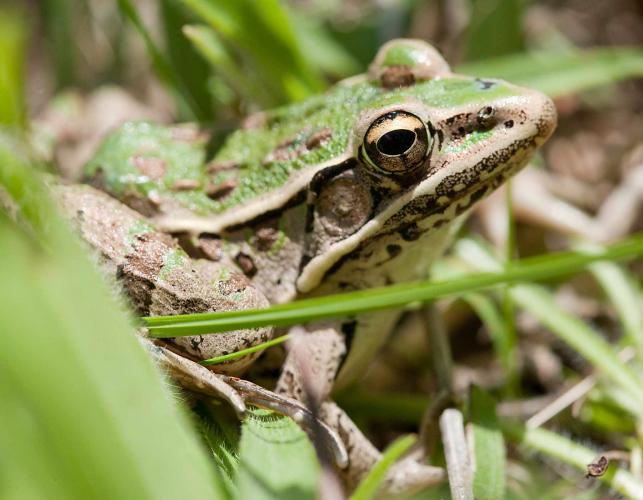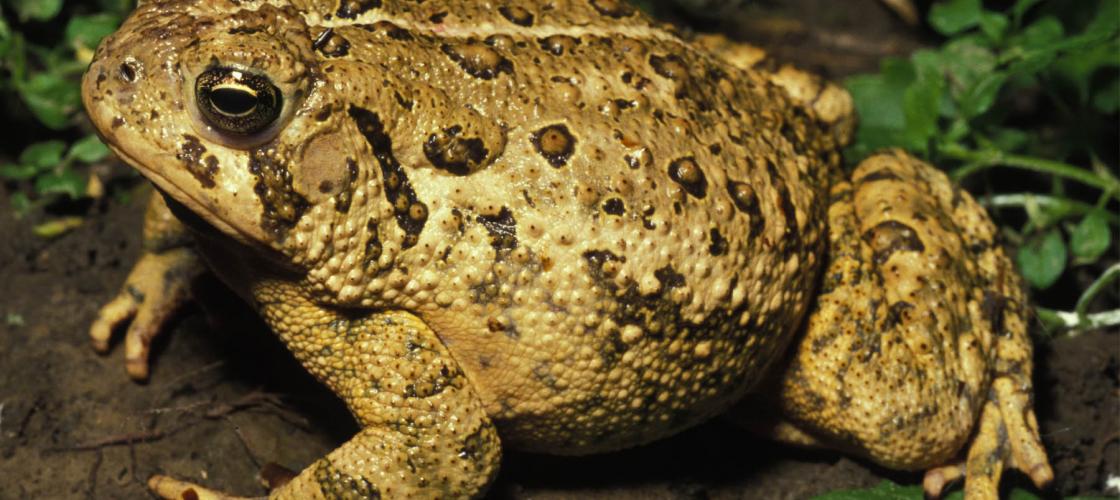Toads and frogs: You see and hear them near water and wooded areas. But how can you differentiate between these two amphibians that are vital to our ecosystem?
Most Midwestern states have between 15 and 20 kinds of toads and frogs. Although toads and frogs bear a strong resemblance, there are some interesting distinctions between them.
In general, toads are dry and have rough skin; frogs feel moist and have smooth skin. Toads have short hind legs, just right for hopping; frogs have large, powerful hind legs and can jump a long way in one leap. Toads have little or no webbing between the toes on their hind feet; frogs have a lot of webbing between their toes, which provides for a powerful stroke when swimming.
One of the least familiar differences between toads and frogs is that toads have no teeth, while all frog species have teeth. But frogs’ teeth resemble sandpaper–just right for holding onto the insects they eat. Both toads and frogs eat vast numbers of insects.
Even the eggs of toads are distinct from frogs’ eggs. Female toads lay their eggs in two long strands, which look like a string of beads. Frogs deposit their eggs in large masses or clumps.
The males of each kind of toad and frog have distinct breeding calls. The chirps, croaks, trills and peeps of these animals fill the night air in spring and early summer.
Toads and Frogs: Valuable to Nature
-
Toads and frogs are predators that help keep populations of insects and other small animals in balance. They (and their eggs, tadpoles, and young) become food for both aquatic and terrestrial predators ranging from water bugs and fish to birds and raccoons.
- Because they are sensitive to pollutants, frogs are considered indicator species whose health and numbers can be a way to gauge the health of their ecosystem.
- During summer nights, toads help us by consuming insects and other small organisms that are pests or annoyances to us.
- Toads lay several thousand eggs in flooded fields, ditches, ponds, pools and streams. These hatch in about a week. The black tadpoles begin to change into toadlets by late June or mid-July.
Find out more about toads and frogs with MDC’s Field Guide.




Recent Posts
























